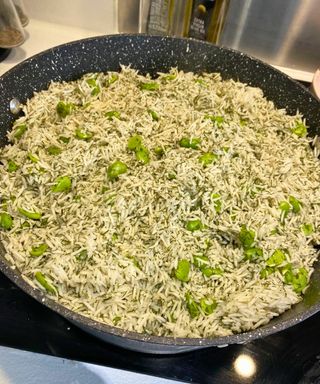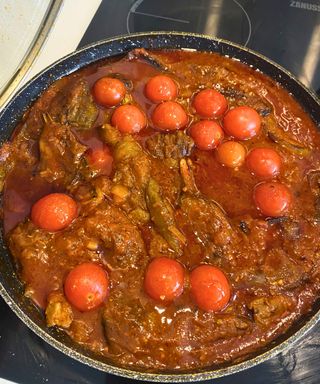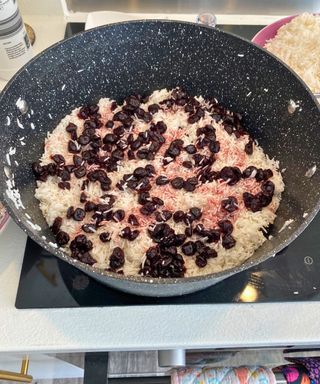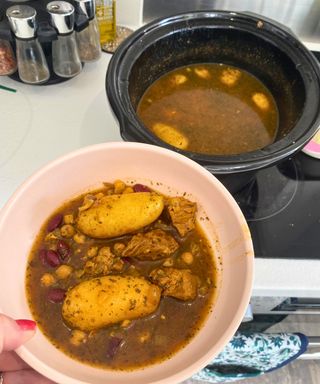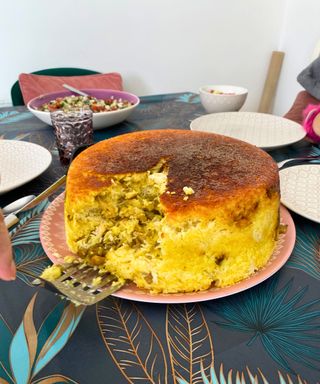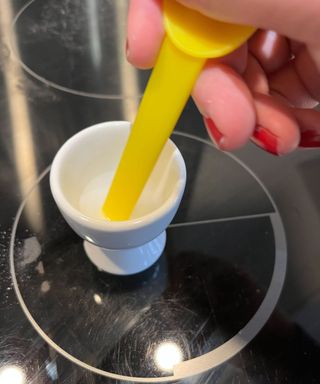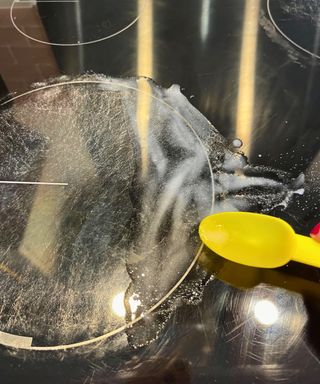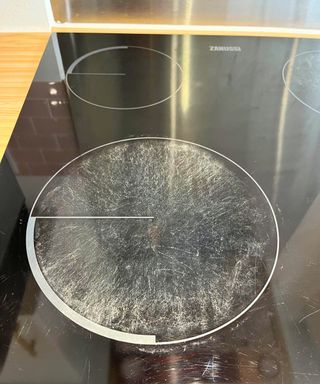My home was newly built when we moved in, and it was spotless. The glass hob, the first electric one I’d ever had, was new to me and within a few weeks, I had scorched the glass with the bottom of a pot.
I tried for four years to scrub the marks away and eventually accepted those marks were not budging. Then, I interviewed dozens of cleaning experts for my role as head of Solved here at Homes & Gardens and realized baking soda was a brilliant, gentle, natural and crucially, abrasive cleaning agent.
I gave this cleaning tip a go and was amazed to see the scorch marks around the edge finally lift. Here’s what I did, and how you can utilize baking soda on your glass stovetop without worry.
Using baking soda on glass stovetop scorch marks
It’s quick, easy and very effective. Here’s what I used if you decide to give it a go.
The scorch mark problem I had on my glass stovetop

I cooked Persian sweet and sour cherry rice with saffron chicken, a dish called Albaloo-polo ba morghe (cherry rice with chicken), on my electric stovetop
(Image credit: Future/Punteha van Terheyden)
My heritage is Persian and boy, do we like to cook. Rice is on the menu most days in our home and even the most experienced rice-cooks like me make a blooper every now and then, seeing water spill over the edge of the pot and onto the glass stovetop.
The only problem for me was spills like those left a scorch mark on the stovetop, usually in a ring. The ones on the right side, seen below, were really stubborn and wouldn’t lift. I tried cleaning my glass stovetop with commercial cleaners and even a homemade glass cleaning spray with nature’s powerful cleaning agent, vinegar. It didn’t work on the scorch marks you can see on the right:
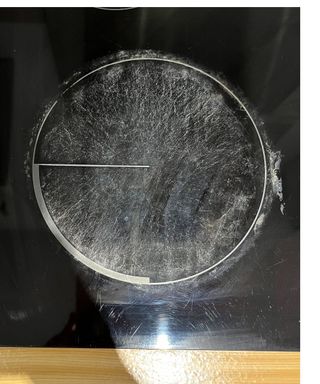
The scorch marks on the edge of the rings of my electric glass stovetop were so hard to shift
(Image credit: Future/Punteha van Terheyden)
Add to that my husband’s pasta-only cooking repertoire, and the front left ring got an absolute battering weekly. After a while, I accepted I was never going to get rid of those burn marks around the edge of the ring, despite cleaning the stovetop after every cooking session.
Then Karina Toner, operations manager and cleaning pro at Spekless told me about using water and baking soda, available at Amazon, to make a quick and easy cleaning paste.
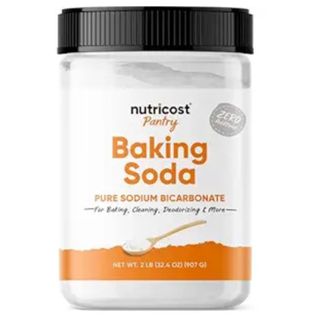 32 lb tub
32 lb tub
Nutricost Baking Soda (2 Lbs)
I buy my baking soda in bulk because I use it for so many cleaning and deodorizing jobs around the house, including when there was a stinky spill on the sofa, and to freshen up carpets, mattresses, and scrub with during cleaning tasks.
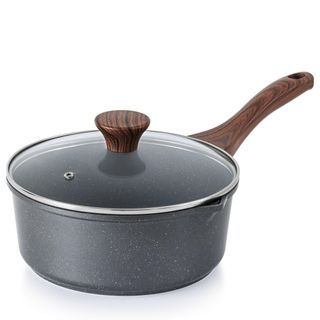 Non-stick
Non-stick
SENSARTE 3QT Nonstick Sauce Pan with Lid with Double Spout for Pouring
I use a 3 quart pot similar to this one which is non stick and has a lid for my Persian cooking. The wide flat bottom is perfect for cooking crispy tahdig at the bottom of my rice, which cooks evenly and without burning the center. A 3 quart will easily fit 6-8 portions of rice.
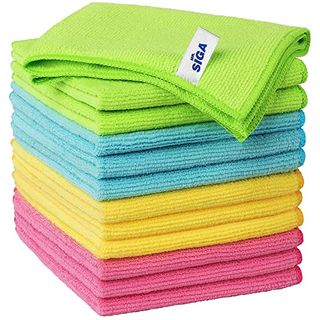 Bestseller
Bestseller
Mr.siga Microfiber Cleaning Cloth, pack of 12
I swear by microfiber cloths for cleaning and dusting. They wash well and last for a long time. Just avoid using fabric softener on these as that will compromise its ability to soak up as much liquid. Make sure to wash dirty cloths on a hot wash to kill bacteria.
What I did
This cleaning job was really easy to carry out and I did it while the kettle boiled for a cup of cardamon tea. So, you’ll need only five minutes and a few items to try this yourself.
- Make a paste. I used a tablespoon of baking soda, and added a little water till it was a gritty paste.
- I then spread it around the glass stovetop but only on the scorch marks on the right side to test easily. Use it wherever you need.
- I left it for the few minutes it took for my kettle to boil, then used a sponge to gently rub the paste in circles on the scorch marks. Voila! It came off.
- I then used a damp microfiber cloth to lift away the paste and dried the area with a paper towel.
Perfect! After all that time thinking the scorch marks were permanent and a part of having a glass stovetop, I realized it didn’t have to stay looking that way.
When you try it on yours, give it a go on the back half first, just to make sure there aren’t any adverse effects to the surface. It shouldn’t be an issue, but as with all new cleaning methods, it’s best to try it on a discreet area first.
My verdict
It worked really well on the perimeter, where I focused my efforts (as I was running out of baking soda) and I honestly couldn’t believe I had lived with the scorch marks for four years. A real boon.
It is worth noting it didn’t get all the marks off in one go but I am OK with that. I will implement this into my regular kitchen cleaning checklist and feel confident over time, it’ll be easier to maintain a clean and scorch-free stovetop.
When I next have my stock of baking soda in, I will try it on the whole ring and report back here.
Next, delve into the lemon hack I tried when cleaning stubborn water marks from my faucets and how it banished limescale I hadn’t been able to shift with commercial cleaners.
Plus, learn about all the things you can clean with baking soda around the home.
When we first moved into our newly built home, everything was spotless. However, as a first-time user of an electric glass hob, I accidentally scorched the glass with the bottom of a pot within a few weeks. Despite trying for four years to scrub the marks away, they remained stubbornly in place. It wasn’t until I interviewed cleaning experts for my role at Homes & Gardens that I discovered the power of baking soda as a gentle and effective cleaning agent for removing scorch marks on a glass stovetop.
I decided to give this cleaning tip a try and was amazed at how easily the scorch marks around the edge of the stovetop lifted. Here’s what I did and how you can use baking soda to tackle scorch marks on your glass stovetop:
Using Baking Soda on Glass Stovetop Scorch Marks
It’s quick, easy, and highly effective. Here’s what you’ll need:
The Scorch Mark Problem

My heritage is Persian, and cooking is a big part of our culture. Unfortunately, spills and scorch marks on the glass stovetop were a common occurrence due to our daily cooking routines.

Despite trying various cleaning methods, including commercial cleaners and homemade solutions, the scorch marks remained persistent and refused to budge.
That’s when I discovered the power of water and baking soda as a cleaning paste, recommended by a cleaning expert. Here’s what I did:
What I Did
Using a tablespoon of baking soda and a little water, I created a gritty paste and applied it to the scorch marks on the right side of the stovetop. After a few minutes, I gently rubbed the paste in circular motions and then wiped it away with a damp microfiber cloth.
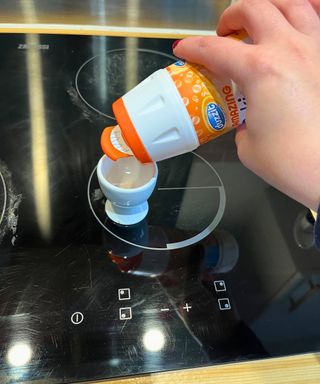
After this simple process, the scorch marks lifted easily, leaving the stovetop looking clean and refreshed.
My Verdict
I was amazed at the effectiveness of baking soda in removing the scorch marks. While it didn’t remove all the marks in one go, I was satisfied with the results and plan to incorporate this cleaning method into my regular kitchen cleaning routine.
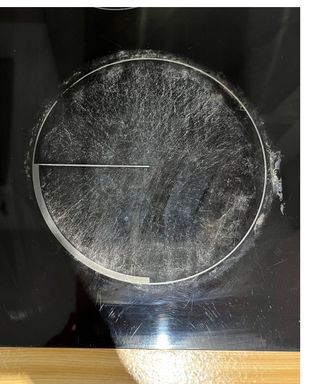
It’s worth noting that I will continue to use baking soda to maintain a clean and scorch-free stovetop, and I look forward to seeing further improvements over time.
For more cleaning hacks using everyday household items, stay tuned for my next experiment using lemon to tackle stubborn water marks on faucets.

